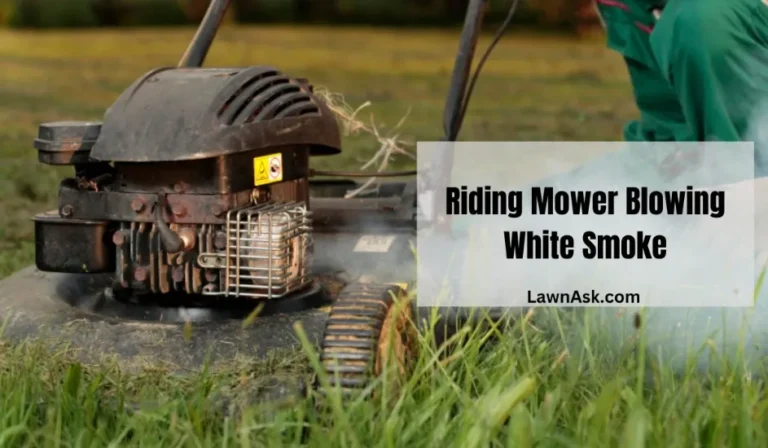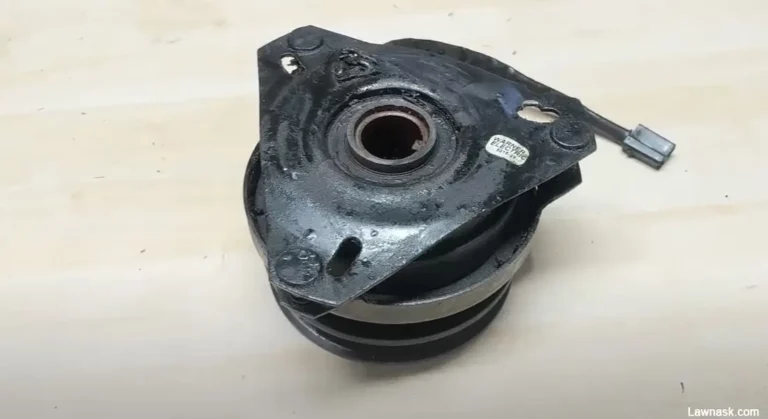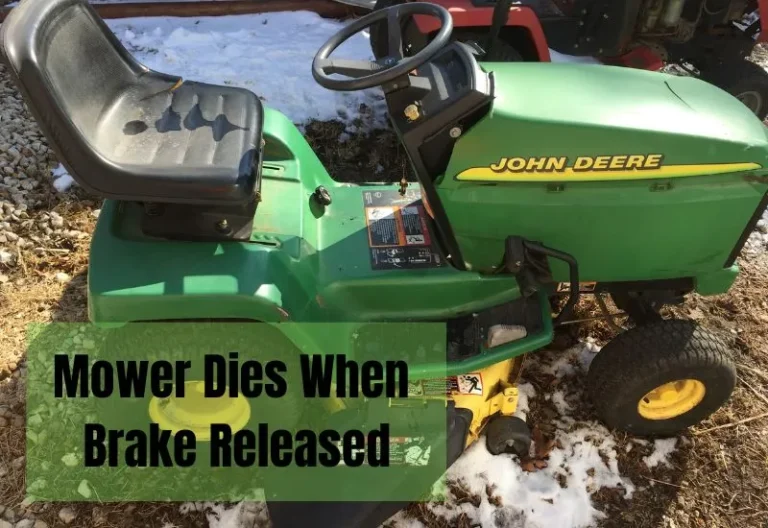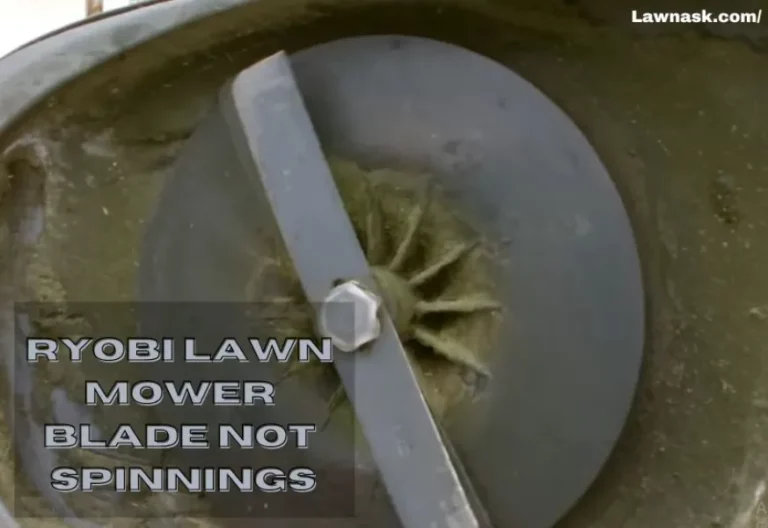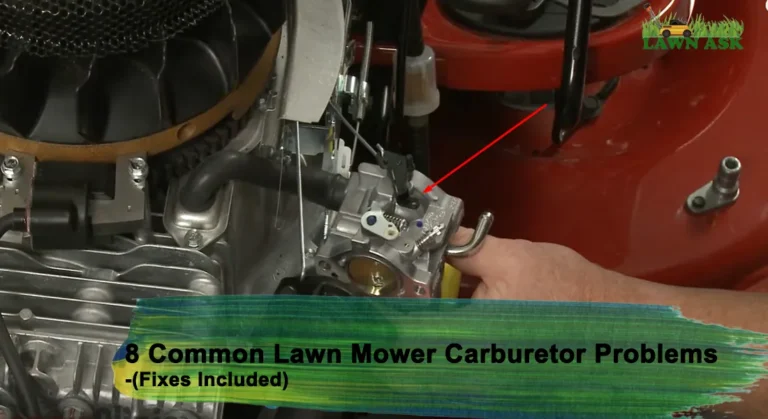Loose Mower Deck Belt Symptoms! How to Fix It?
A mower’s flawless operation depends on each of its parts working properly, and the belt is one such important component. However, a mower’s effectiveness might be hampered and different issues could arise if the belt falls loose.
This might occur for a number of reasons, such as excessive deck vibration, loose pulley, low cutting efficiency, poor belt engagement or failure of tension spring.
These likely causes of loose mower deck belt symptoms will be described in this article. Some recommendations on how to resolve the problem will also be given to get your mower’s loose belt back in working condition.
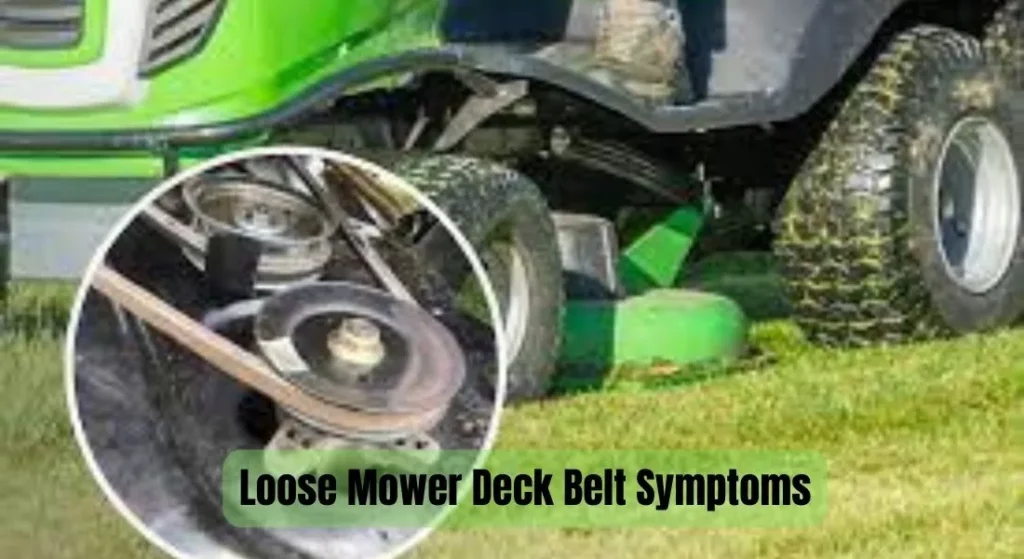
5 Symptoms of Loose Mower Deck Belt Symptoms (Easy Fixes Included)
Here are some symptoms of loose mower deck belt that you should be aware of:
1. Excessive Deck Vibration
A frequent sign of a loose mower deck belt is excessive deck vibration, which can happen for a variety of factors. Vibrations during operation may result from the mower deck’s unbalanced blades’ unequal weight distribution.
When cutting grass, the bent or broken blades may also result in an unbalance and excessive vibration.
The spindle’s parts, such as the spindle shaft, bearings, or pulleys, might loosen up with time. As a result, there may be vibrations and wobbling of the blades.
The Fix
Use a blade balancer to adjust the blades’ balance if required. The vibration that occurs during operation can be decreased by balanced blades. Examine the spindle shaft and bearings for any slack or signs of wear.
Check and tighten all blade spindle components. Replace or tighten any loose or faulty parts. The area around the mower deck should be cleared of any gathered trash, grass clippings, or impediments.
Clean the underneath of the deck completely with a brush or compressed air. Be sure to check and correct the alignment of the deck to make sure it is level and parallel to the ground.
2. Loose Pulley
The mower deck belt may also become loose or disconnect if the mower deck pulleys loosen up entirely. The bolts or screws keeping the pulleys in place may become loose due to vibrations produced when the mower is operating.
If the bolts or pulleys were not torqued to the specified specifications during assembly or maintenance, they may over time become progressively loosened.
The fasteners may become loose as a result of the pulleys’ frequent tension and movement, which can cause wear on their mounting surfaces or threads.
The Fix
Verify the pulleys in detail for any indications of wear or slackness. To determine if they need to be replaced or tightened, inspect the mounting bolts or fasteners primarily.
Installing bolts or other fasteners on the pulleys need careful tightening, therefore use the proper tools. Make sure they are well secured, but avoid overtightening, which might harm them.
Inspect the pulleys’ alignment to make sure the belt and the other pulleys are in the right positions. To ensure smooth pulley action, lubricate the bearings on the pulleys. This will assist to prevent friction and wear.
3. Low Cutting Efficiency
The tension and stress on the belt are enhanced when the mower deck is overloaded. Over time, this extra tension may cause the belt to loosen.
Also, mowing grass that is thick or tall can overload the mower blades, causing them to strain and lose cutting effectiveness. A loose belt may occur from the belt sliding or losing grip on the pulleys due to decreased cutting effectiveness.
Increased resistance to the blades rotating might result from overloading the mower deck. The belt is put under additional stress due to resistance. This might lead to slippage or loosening.
The Fix
Clear the mower deck of any extra grass or plants as soon as possible. Better airflow is made possible by clearing the deck. This also lessens pressure on the belt and blades.
If the grass or other kind of plant is excessively tall, make multiple passes at progressively lowering the cutting height. The blades and belt are kept from being overworked by cutting few pieces at a time.
Mower blades should be sharpened often to guarantee effective cutting and to ease strain. Verify that the belt is in excellent condition and not too loose. Also, adjust the tension according to the manual.
4. Insufficient Belt Engagement
Poor belt engagement is the most frequent cause of the loosening of the mowers’ belts. Customers claim that this is the most common problem they have with their mower.
This may occur if the belt is positioned on the pulleys improperly, is twisted, or is not routed appropriately. Improper engagement and a loose fit might be the result of poor installation.
The Fix
Make sure that the belt is positioned appropriately on the pulleys with the right orientation and is not twisted.
Check the belt for deterioration, cracks or straining. Replace the belt if it exhibits severe deterioration or wear. For the right belt parameters, verify the part number or refer to the manual.
Adjust the tensioning mechanism with expert assistance if the tensioning force is inadequate. To obtain the correct belt tension, this may require tightening or loosening particular components.
5. Tension Spring Failure
The spring may develop metal fatigue over time, which will cause it to lose some of its initial flexibility and strength. So, the belt may have less tension. This might result in slackness or a loose belt.
If the spring is damaged, it could not exert enough force to maintain the belt’s optimum tension. This might cause the belt to sag and have an impact on the mower’s operation.
Continuous usage, exposure to external elements, and a lack of maintenance may all end in a spring’s performance degrading. A slack belt might come from the spring losing its capacity to maintain adequate tension as it ages.
The Fix
First, inspect the tension spring; if the spring is obviously old or broken, it is likely to be replaced.
Observe the instructions in the manual to safely remove the tension on the old spring. This can entail disengaging any tension-producing devices or manually releasing tension.
Remove the old spring with caution from any mounting or attachment points. Aligning the new tension spring appropriately with the tensioning system, place it in the stated area.
Related Post: Should a Mower Deck Be Level Front to Back?
Loose Mower Deck Belt Symptoms – FAQs
How frequently should I check the mower’s belt tension?
Frequently check the belt tension, ideally before each mowing season. Additionally, you should check for a loose belt.
Do I need to replace a slack belt or can I reuse it?
Replacing a slack belt with a brand-new belt that adhere to the producer’s instructions is advised over reusing one.
What are the main indications of a loose mower belt?
Slipping or squealing sounds, decreased power or cutting effectiveness, noticeable slack or sag in the belt, or the belt coming off the pulleys.
Can the mower be harmed by a slack belt?
It may result in ineffective cutting, decreased power transfer, increased wear on the belt and pulleys, and belt slippage.
Related Posts:
- Adjusting Steering on Your Bad Boy Mower: Step-by-Step Guide
- Fixing the 5 Most Common Kohler 24 hp Engine Problems
- Dealing with Briggs and Stratton Oil Coming Out of Breather Tube: Solutions
- Identifying 5 Lawn Mower Bad Spark Plug Symptoms and Solutions
- Understanding Symptoms of Improper Air Gap on a Coil and How to Fix Them

